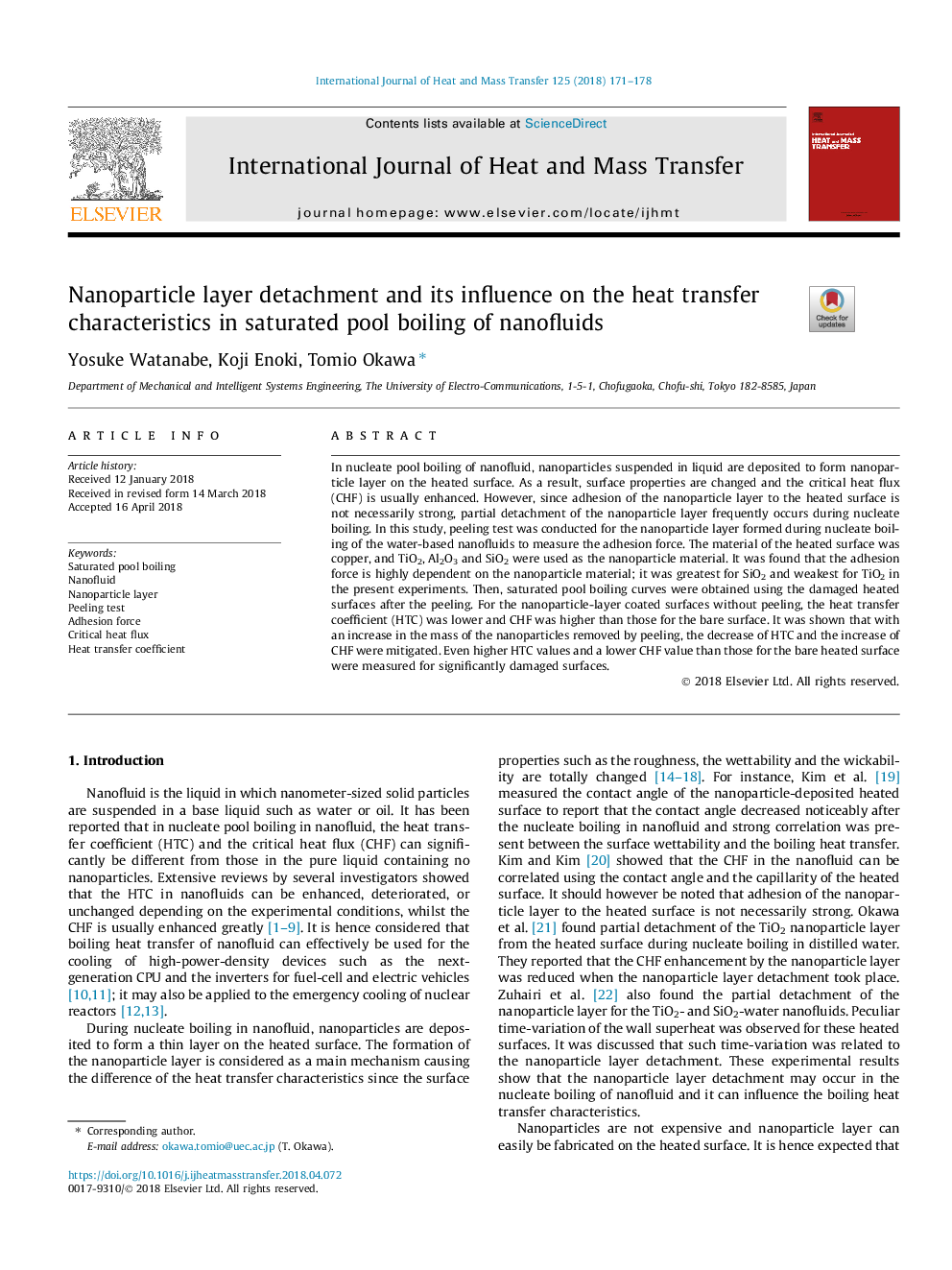| کد مقاله | کد نشریه | سال انتشار | مقاله انگلیسی | نسخه تمام متن |
|---|---|---|---|---|
| 7054017 | 1458015 | 2018 | 8 صفحه PDF | دانلود رایگان |
عنوان انگلیسی مقاله ISI
Nanoparticle layer detachment and its influence on the heat transfer characteristics in saturated pool boiling of nanofluids
ترجمه فارسی عنوان
جداسازی لایه نانو ذرات و تأثیر آن در ویژگی های انتقال گرما در گرمایش اشباع شده با گرمایش نانوسیم ها
دانلود مقاله + سفارش ترجمه
دانلود مقاله ISI انگلیسی
رایگان برای ایرانیان
کلمات کلیدی
جوش پایدار اشباع شده، نانو سیال، لایه نانو ذرات، تست پاشی، نیروی جاذب، شار گرمای انتقالی، ضریب انتقال حرارت،
موضوعات مرتبط
مهندسی و علوم پایه
مهندسی شیمی
جریان سیال و فرایندهای انتقال
چکیده انگلیسی
In nucleate pool boiling of nanofluid, nanoparticles suspended in liquid are deposited to form nanoparticle layer on the heated surface. As a result, surface properties are changed and the critical heat flux (CHF) is usually enhanced. However, since adhesion of the nanoparticle layer to the heated surface is not necessarily strong, partial detachment of the nanoparticle layer frequently occurs during nucleate boiling. In this study, peeling test was conducted for the nanoparticle layer formed during nucleate boiling of the water-based nanofluids to measure the adhesion force. The material of the heated surface was copper, and TiO2, Al2O3 and SiO2 were used as the nanoparticle material. It was found that the adhesion force is highly dependent on the nanoparticle material; it was greatest for SiO2 and weakest for TiO2 in the present experiments. Then, saturated pool boiling curves were obtained using the damaged heated surfaces after the peeling. For the nanoparticle-layer coated surfaces without peeling, the heat transfer coefficient (HTC) was lower and CHF was higher than those for the bare surface. It was shown that with an increase in the mass of the nanoparticles removed by peeling, the decrease of HTC and the increase of CHF were mitigated. Even higher HTC values and a lower CHF value than those for the bare heated surface were measured for significantly damaged surfaces.
ناشر
Database: Elsevier - ScienceDirect (ساینس دایرکت)
Journal: International Journal of Heat and Mass Transfer - Volume 125, October 2018, Pages 171-178
Journal: International Journal of Heat and Mass Transfer - Volume 125, October 2018, Pages 171-178
نویسندگان
Yosuke Watanabe, Koji Enoki, Tomio Okawa,
